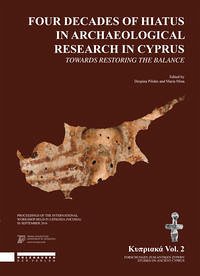Nicht lieferbar

Four Decades of Hiatus in Archaeological Research in Cyprus: Towards Restoring the Balance - Proceedings of the international one-day workshop, held in Lefkosia (Nicosia) on 24th September 2016, hosted by the Department of Antiquities, Cyprus
Versandkostenfrei!
Nicht lieferbar
Four Decades of Hiatus in Archaeological Research in Cyprus: Towards Restoring the Balance - Proceedings of the international one-day workshop, held in Lefkosia (Nicosia) on 24th September 2016, hosted by the Department of Antiquities, Cyprus



